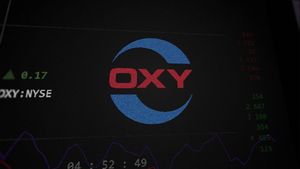HOLLY, Mich, Oct. 02, 2025 (GLOBE NEWSWIRE) -- A diesel vehicle is built tough, but there are two small bits of technology that can bring it to its knees: NOx (nitrogen oxides) sensors. These sensors constantly monitor NOx levels within the engine’s exhaust to help ensure emissions remain at legally required limits. If one of them malfunctions, vehicle performance will suffer.
“When everything's working right, NOx sensors help the SCR system turn harmful NOx gases into harmless nitrogen and water using DEF – diesel exhaust fluid,” explains Clay Parks, Rislone vice president of development. “But when a NOx sensor fails, it will cut down the engine’s power and performance, even to the point of forcing the vehicle into ‘limp’ mode to help ensure the problem is addressed right away.”
Symptoms of a malfunctioning NOx sensor include increased fuel consumption, as well as reduced power and acceleration. If a sensor fails, it will also trigger an on-board diagnostic (OBD) code, turning on the vehicle’s check engine light – also called a malfunction indicator lamp (MIL). The codes can be read by an OBD scanner.
NOx sensor issues are often caused by soot buildup on the sensor, preventing it from measuring properly. Fortunately, restoring NOx sensor function in these cases often just takes a little cleaning with a specialized product like Rislone DPF Clean® Diesel DPF, Exhaust & Emissions System Cleaner (part #4744). It features high-performing detergents and heavy-duty cleaning solvents that effectively scrub and remove contaminants, soot, carbon build-up and oily residue from components throughout the exhaust system. Rislone DPF Clean is a single-bottle solution to help restore a diesel’s lost power and performance, unclog a blocked DPF, turn off check engine lights and clear P242F and similar OBD codes.
Simply pour it into the vehicle’s fuel tank and drive. Regular use every 5,000 miles will keep the system clean.
If cleaning doesn’t solve the problem, or if the OBD code points to a mechanical issue, take these additional troubleshooting steps:
- Inspect Wiring and Connections. Check the NOx sensor wiring harness for damage, corrosion, or loose connections.
- Visually Inspect the Sensor. Look for any signs of damage, such as soot buildup, cracks, or contamination.
- Test the Sensor (if possible). Some NOx sensors can be tested using a multimeter or oscilloscope to check power supply and data transmission (CAN) lines.
In you find damage, the faulty NOx sensor probably needs to be replaced. If you're unsure about the troubleshooting steps or the error codes, consult a qualified mechanic.
About Rislone
As a global leading engine treatment brand since 1921, Rislone has a long history of solving and preventing diesel engine issues. The company conducted years of research to develop its DPF and DEF solutions to help customers avoid expensive emissions system repair bills. Like all Rislone products, DPF Clean is made in the USA. Rislone products are available where auto parts are sold. Based in Holly, Michigan, Rislone is ISO 9001 certified. Learn more at Rislone.com.
A photo accompanying this announcement is available at https://www.globenewswire.com/NewsRoom/AttachmentNg/bd0e3c74-d46e-4a6a-a837-e675fd6388a4

Media Contact: Kristen Simpson Simpson Communications, LLC (216) 991-4297 kristen@simpsoncomm.com






